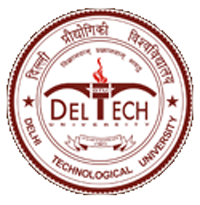Please use this identifier to cite or link to this item:
http://dspace.dtu.ac.in:8080/jspui/handle/repository/22112Full metadata record
| DC Field | Value | Language |
|---|---|---|
| dc.contributor.author | SHUKLA, SWAPNIL | - |
| dc.date.accessioned | 2025-08-11T05:22:01Z | - |
| dc.date.available | 2025-08-11T05:22:01Z | - |
| dc.date.issued | 2025-05 | - |
| dc.identifier.uri | http://dspace.dtu.ac.in:8080/jspui/handle/repository/22112 | - |
| dc.description.abstract | LPR systems have become an integral part of modern ITS as they enhance public safety, traffic flow and effectiveness of law enforcement operations. The structure of the thesis can be broken down into two key parts. The first section examines the current status of LPR technologies and the second part offers a possible approach based on Deep Learning. This section evaluates various machine learning and deep learning based techniques including KNN, CNN, LSTM, Faster R-CNN and YOLO algorithms. Assessing the performance of models under different kinds of data and evaluating their ability to solve actual problems encountered in diverse geographical settings is the main objective. The final part presents a flexible, two-stage LPR pipeline that combines object detection by YOLOv8 and character recognition using EasyOCR. The dataset for both training and testing was composed of 27,900 car images retrieved from the Google Open Images collection. The system managed to identify the license plates with 73.82% accuracy overall. The model correctly detected license plates in 88.42% of the cases. It also achieved 100.00% accuracy in identifying the characters on each plate. The design of the system makes updating sub-models possible, ensuring flexibility and rapid responses under challenging conditions. The report bridges the gap between theory and practice by providing insights into the implementation of License Plate Recognition (LPR) systems. It proposes practical methods to overcome challenges such as image distortion, character confusion and the ability to generalize on various license plate types. These areas, namely, multilingual support, generating synthetic data, rapid edge deployment and examining the utility of universal transformers in end-to-end LPR models, hold great potential for further exploration. | en_US |
| dc.language.iso | en | en_US |
| dc.relation.ispartofseries | TD-8097; | - |
| dc.subject | LICENSE PLATE RECOGNITION (LPR) | en_US |
| dc.subject | YOLOV8 | en_US |
| dc.subject | EASYOCR | en_US |
| dc.subject | INTELLIGENT TRANSPORTATION SYSTEMS | en_US |
| dc.subject | CHARACTER RECOGNITION | en_US |
| dc.subject | OBJECT DETECTION | en_US |
| dc.subject | PIPELINE | en_US |
| dc.subject | CNN | en_US |
| dc.title | ENHANCING LICENSE PLATE RECOGNITION SYSTEMS WITH YOLOv8 AND EASYOCR MODELS | en_US |
| dc.type | Thesis | en_US |
| Appears in Collections: | M.E./M.Tech. Computer Engineering | |
Files in This Item:
| File | Description | Size | Format | |
|---|---|---|---|---|
| Swapnil Shukla M.tech.pdf | 5.37 MB | Adobe PDF | View/Open |
Items in DSpace are protected by copyright, with all rights reserved, unless otherwise indicated.



